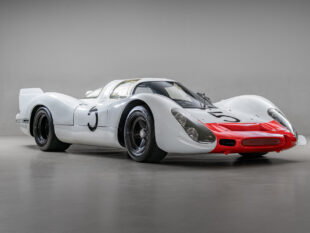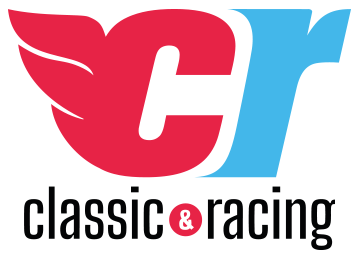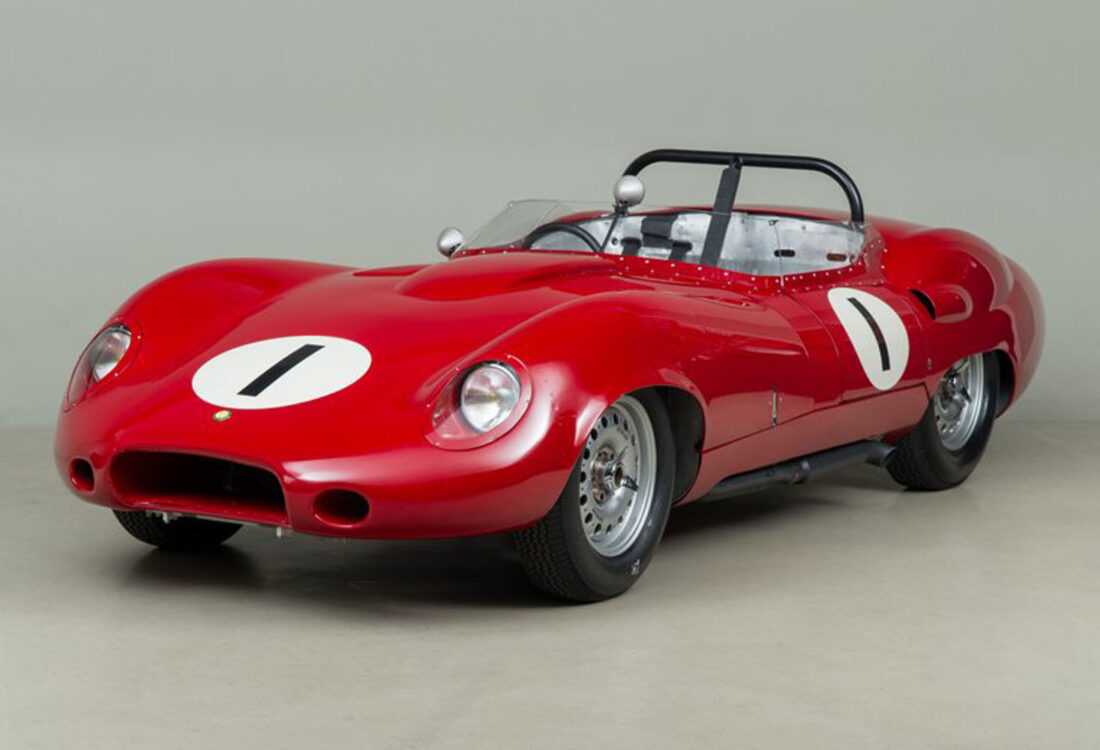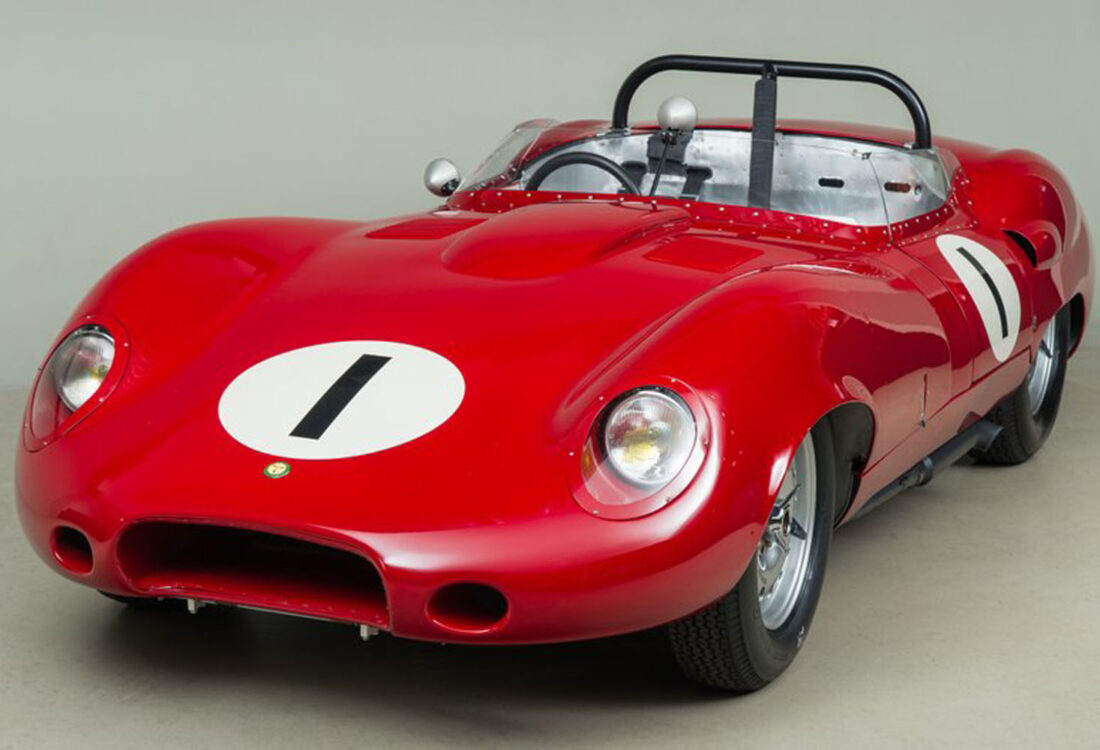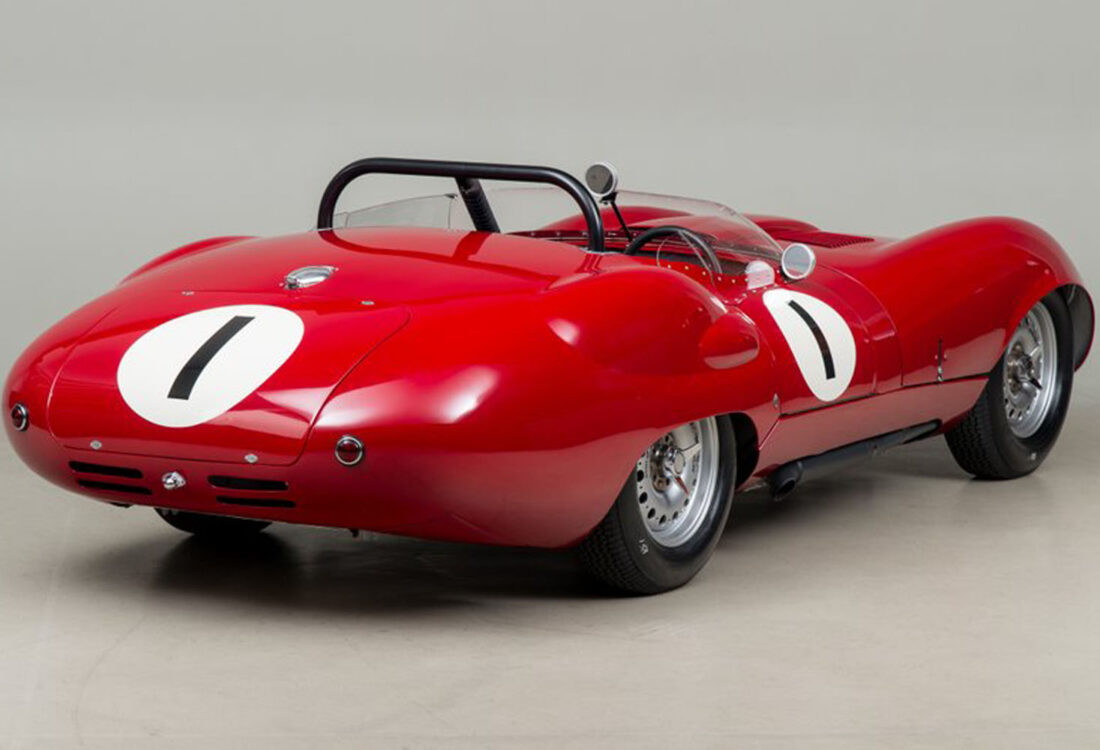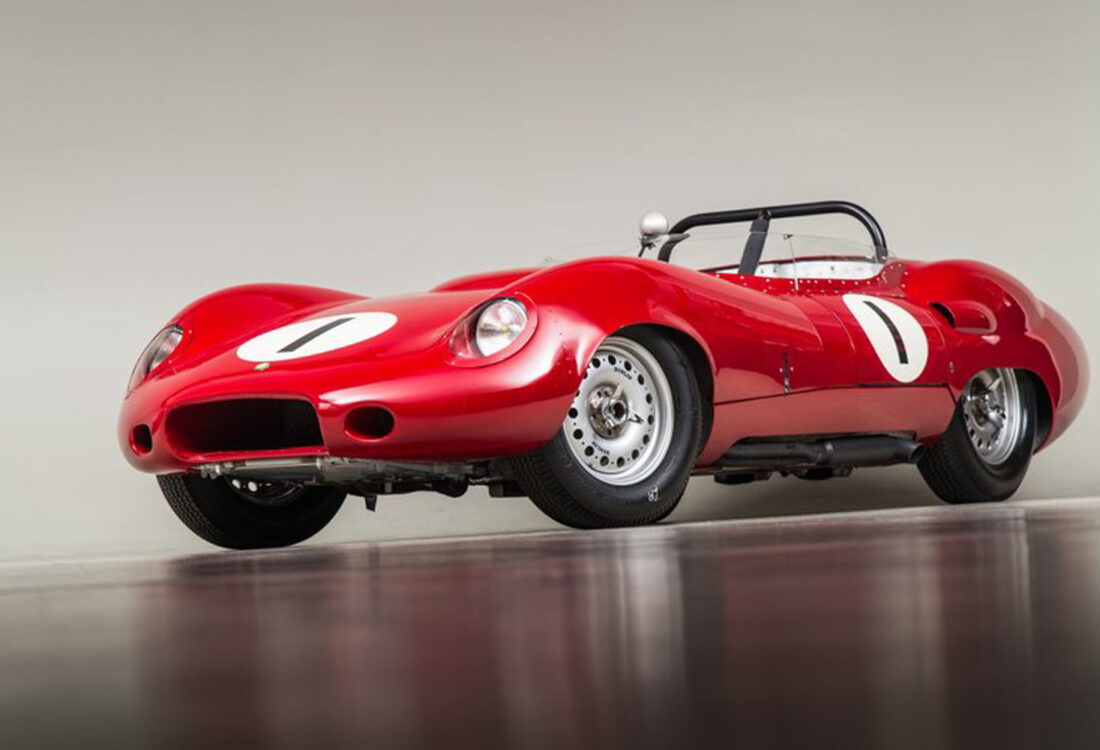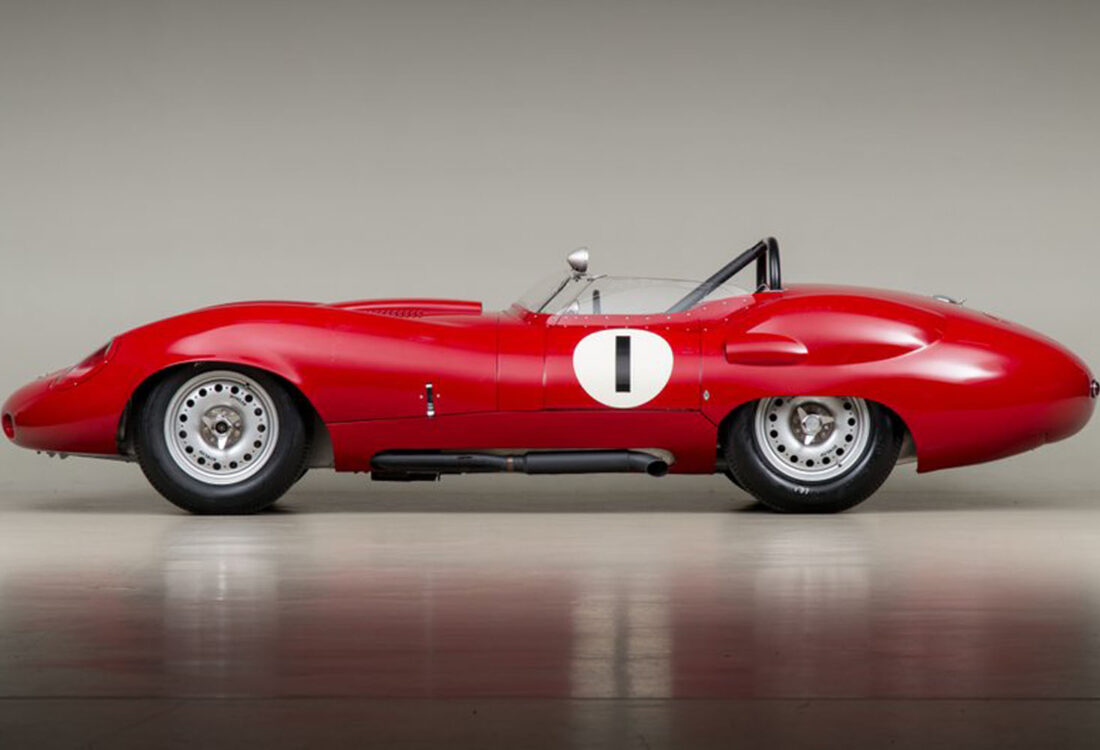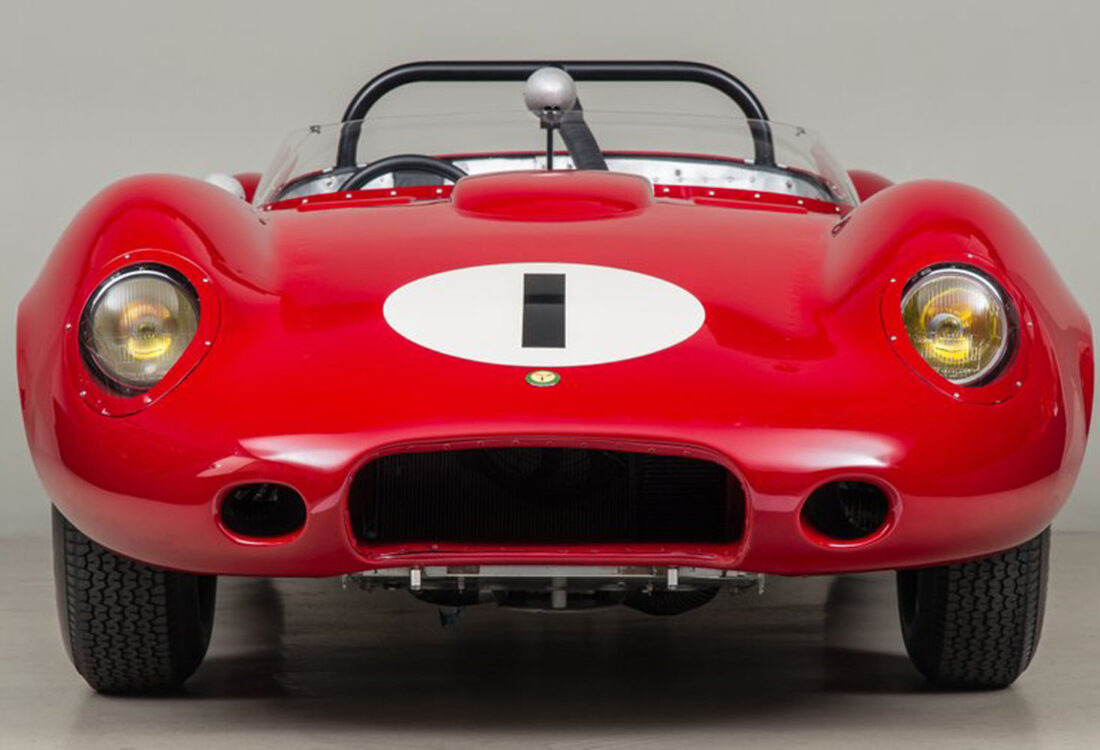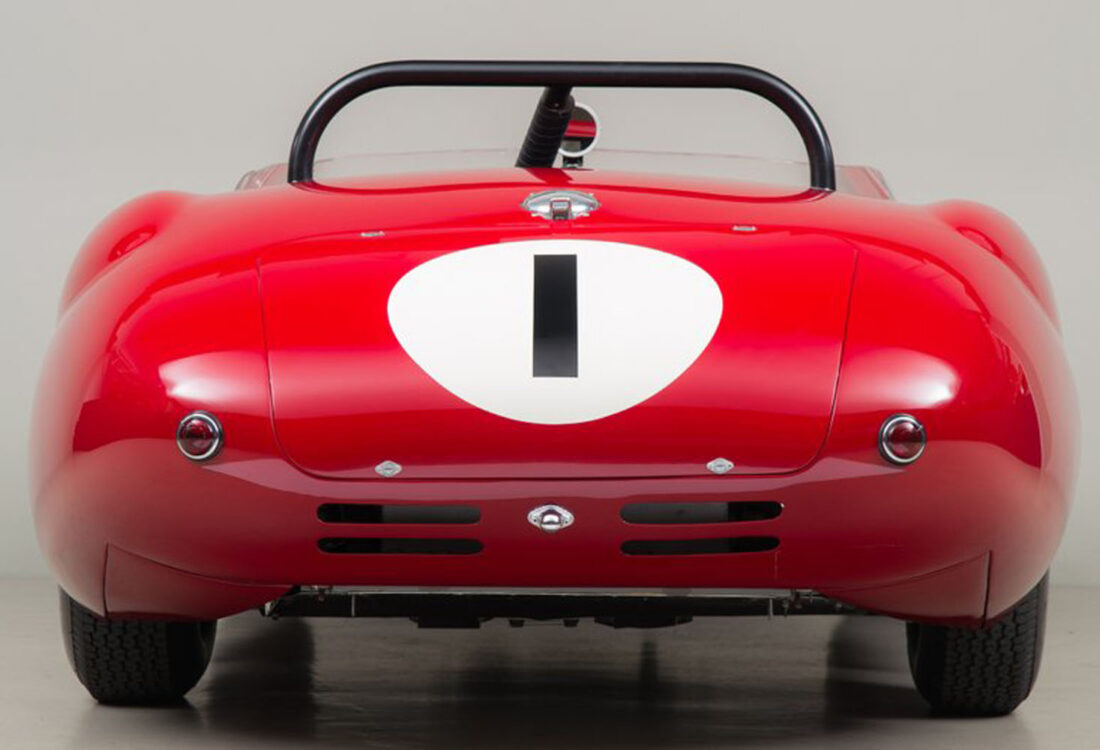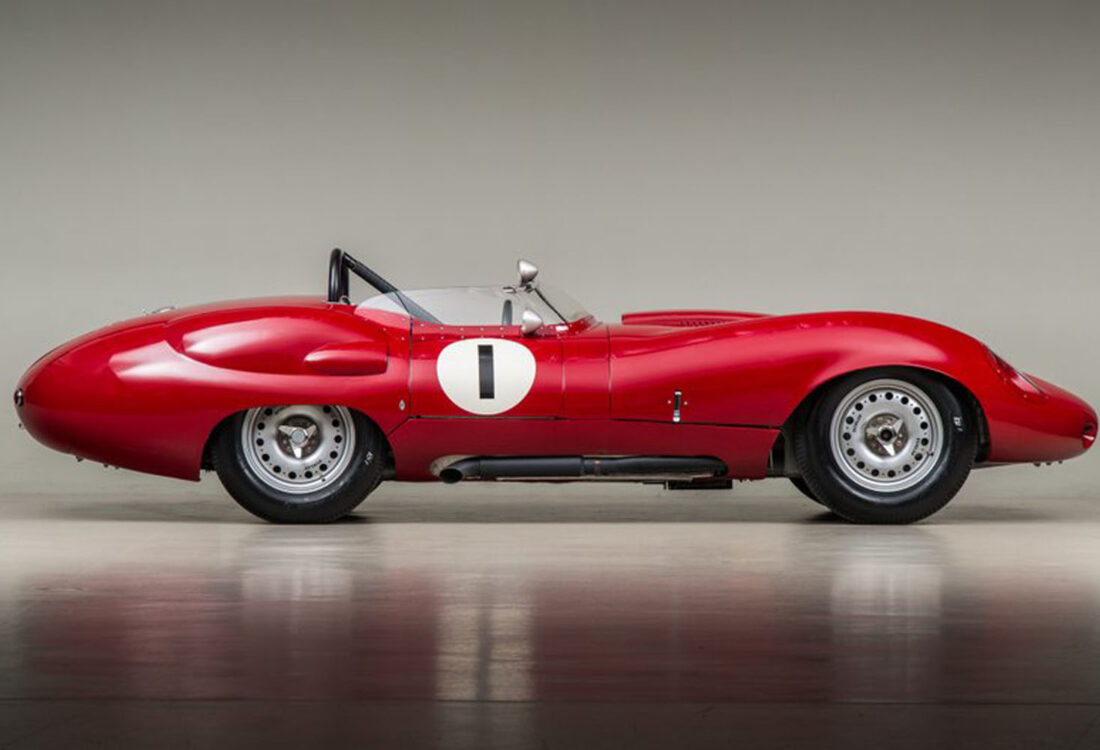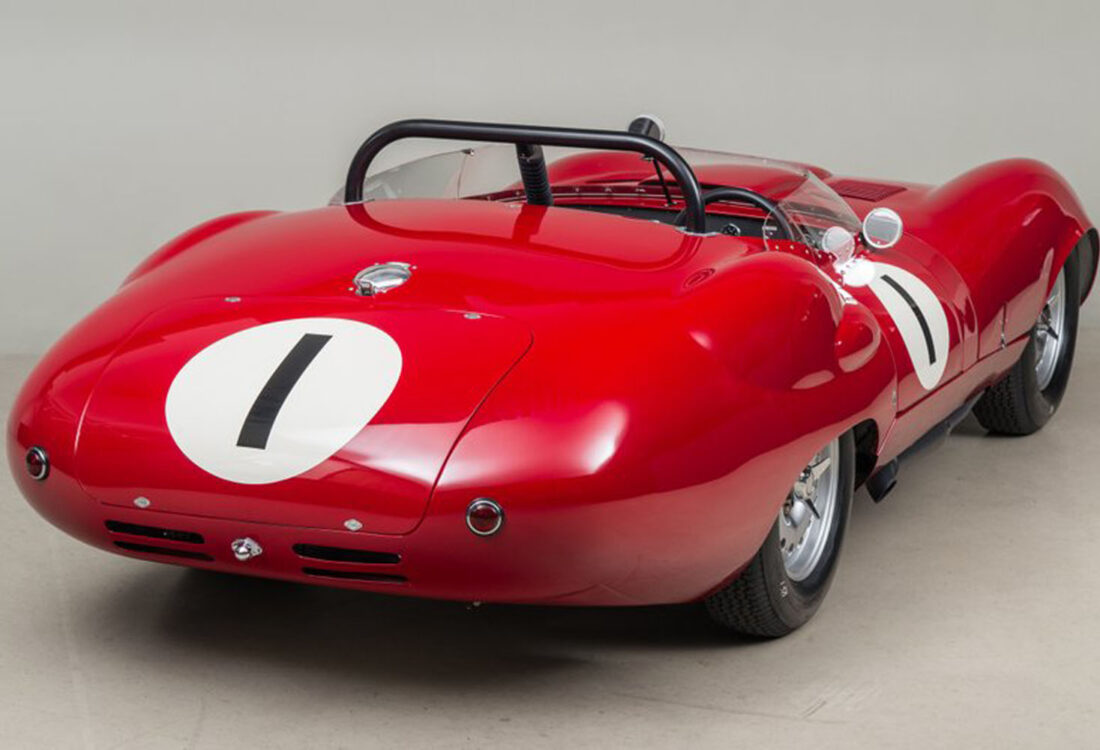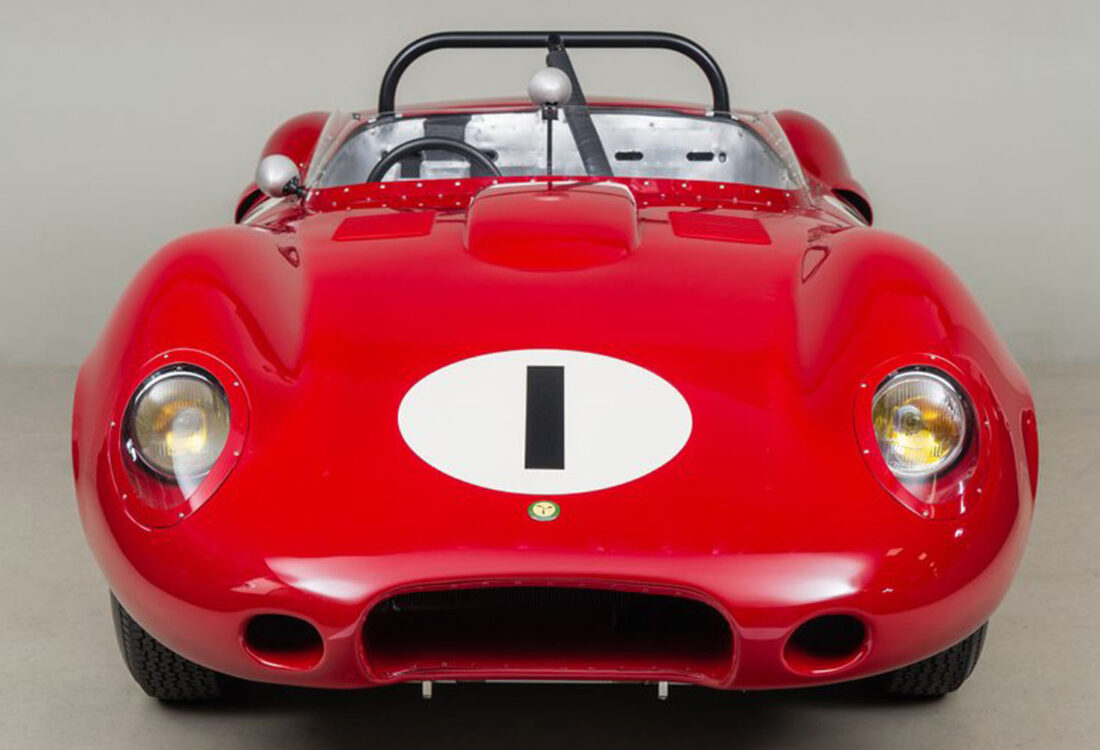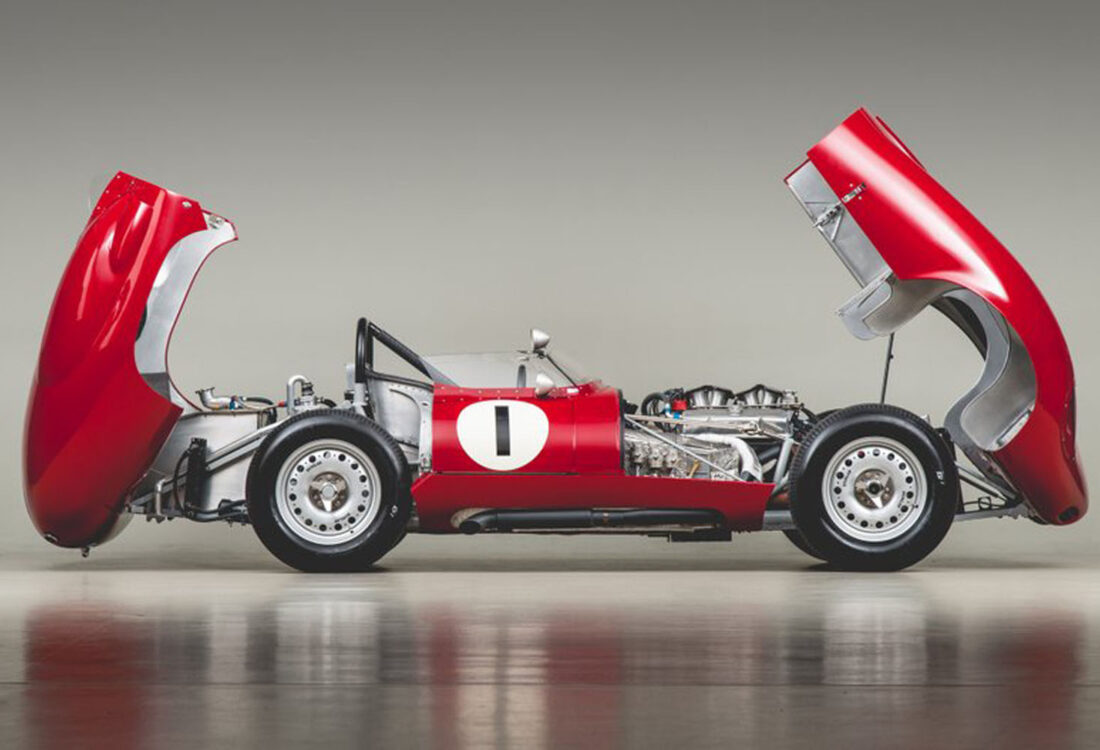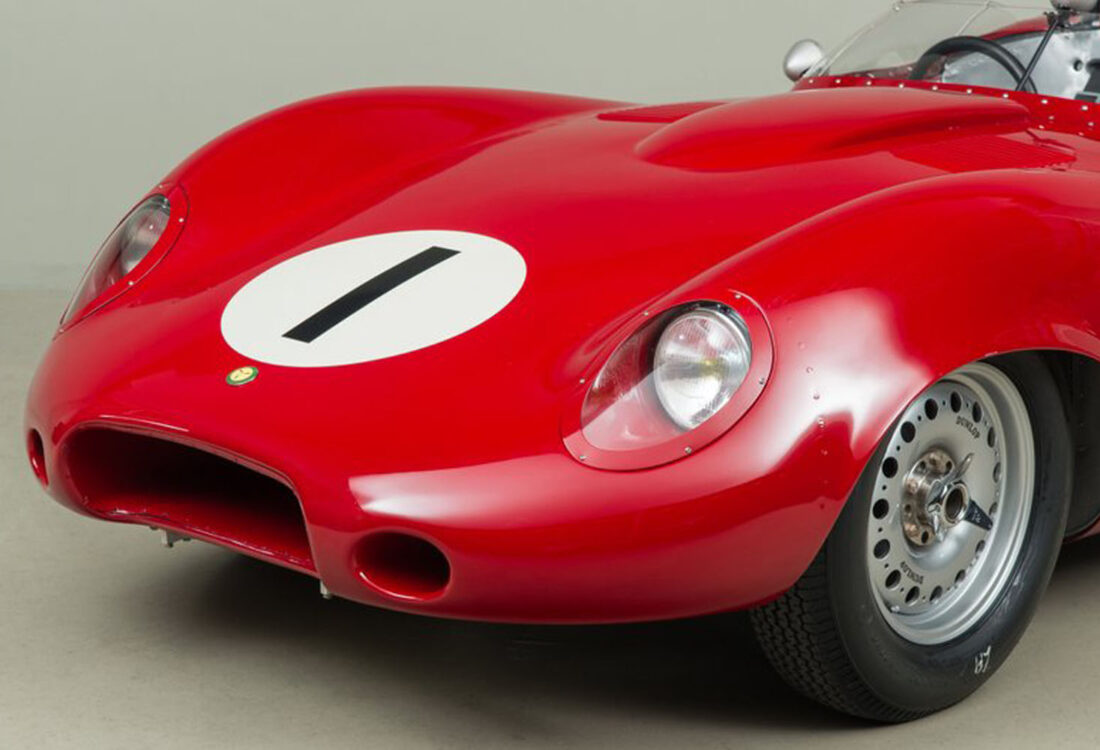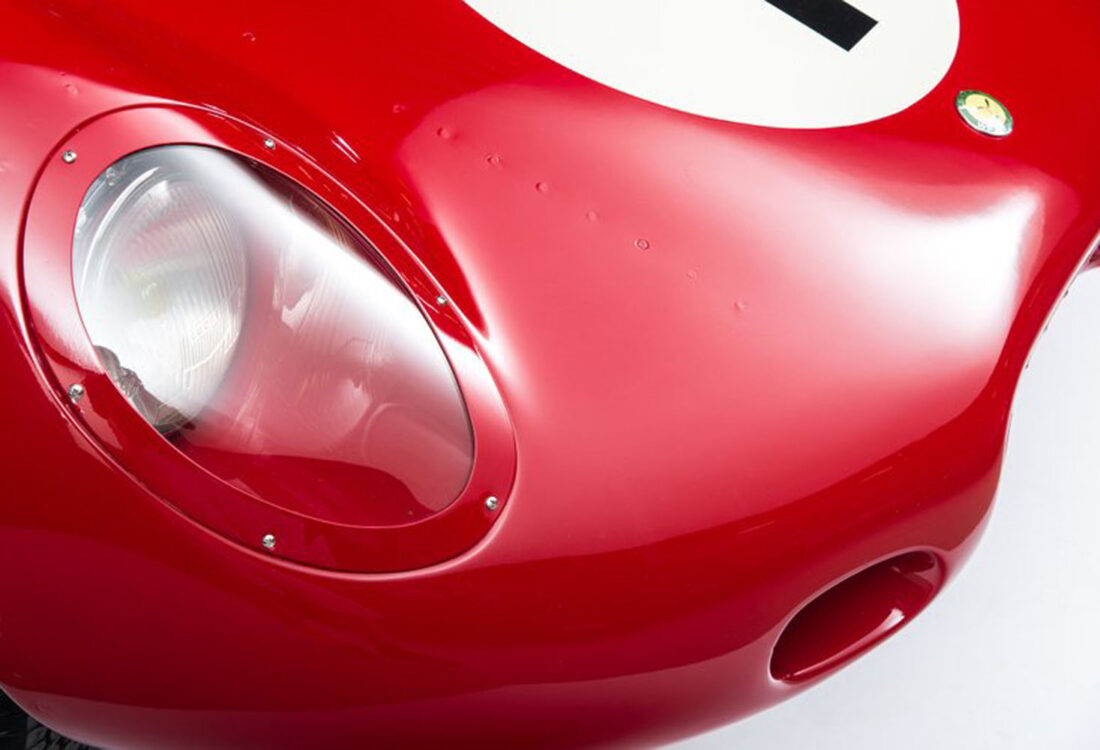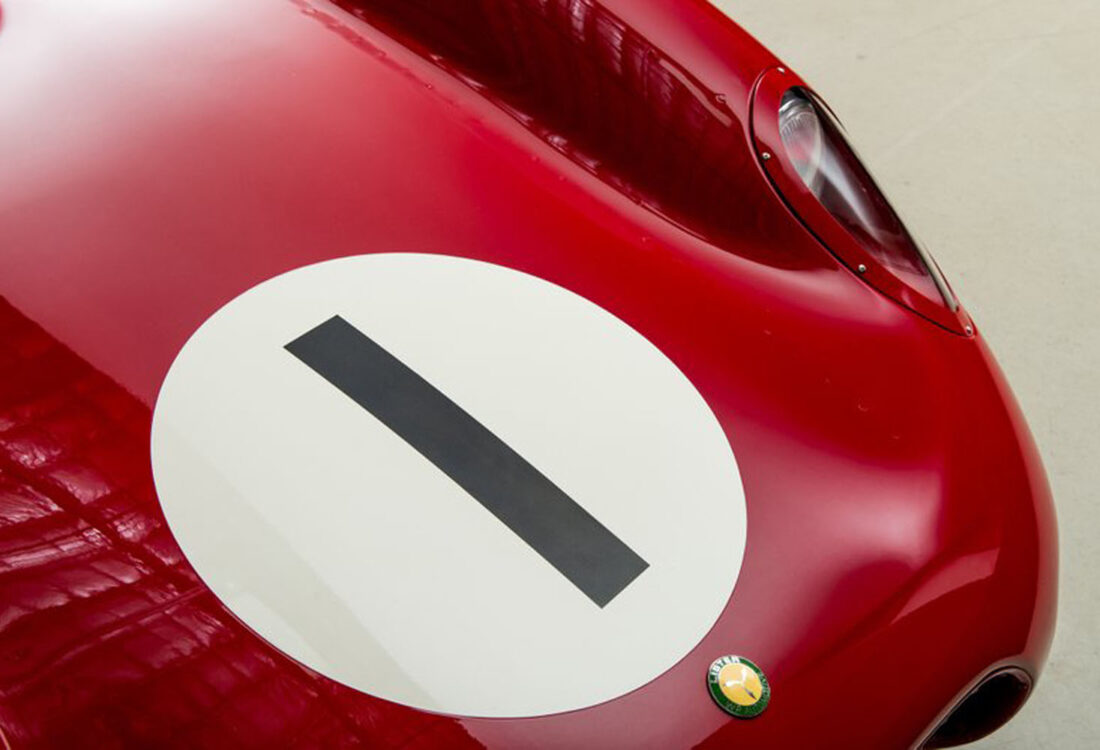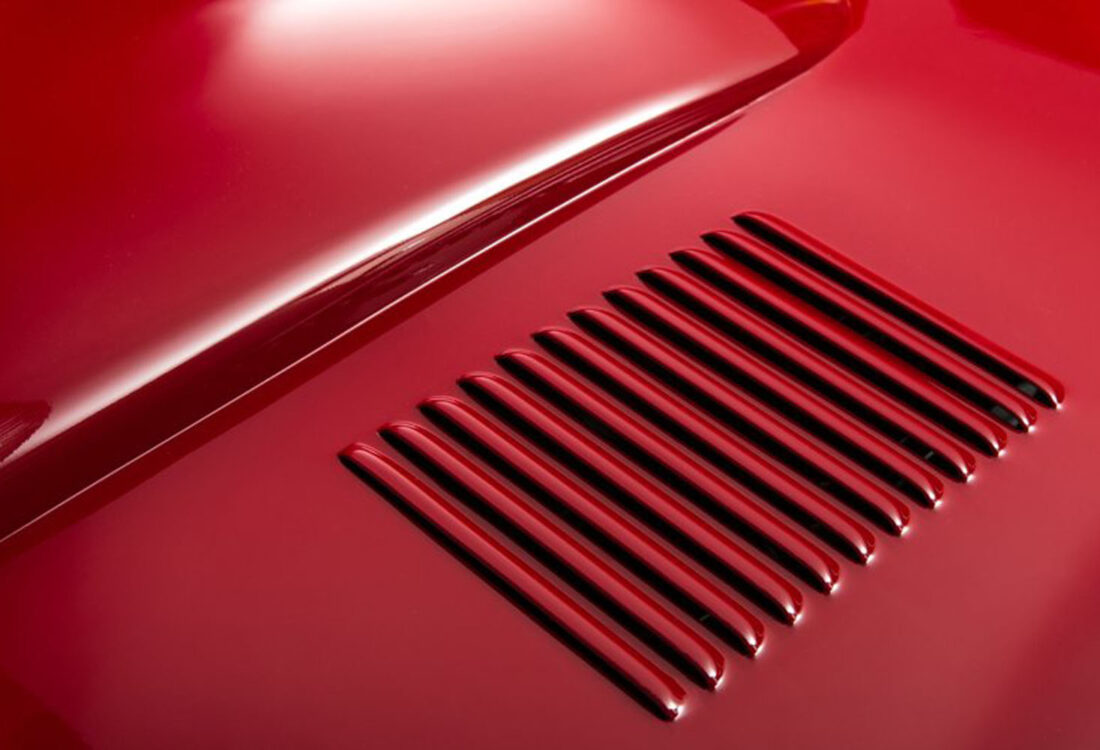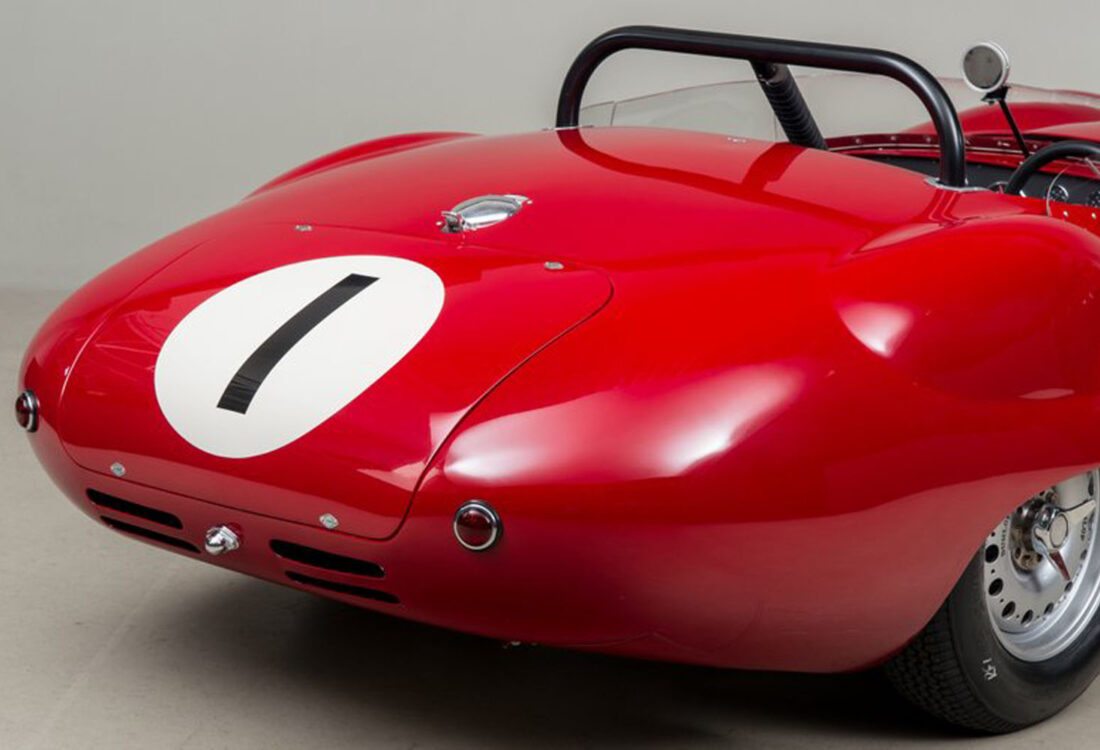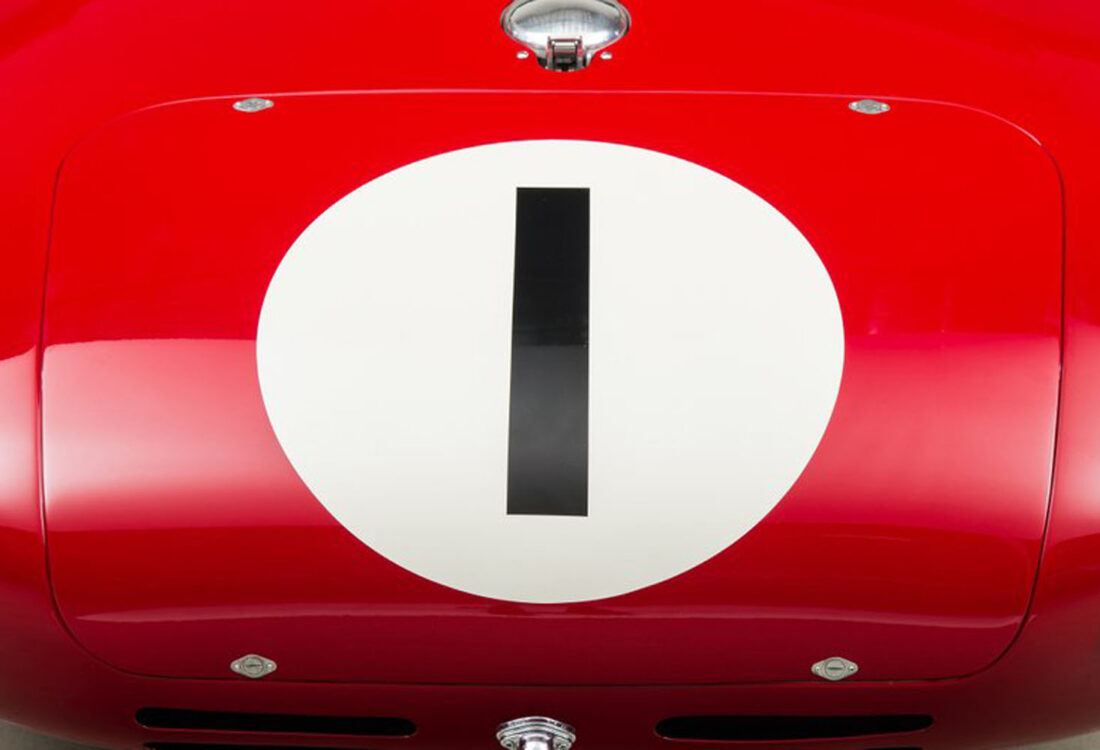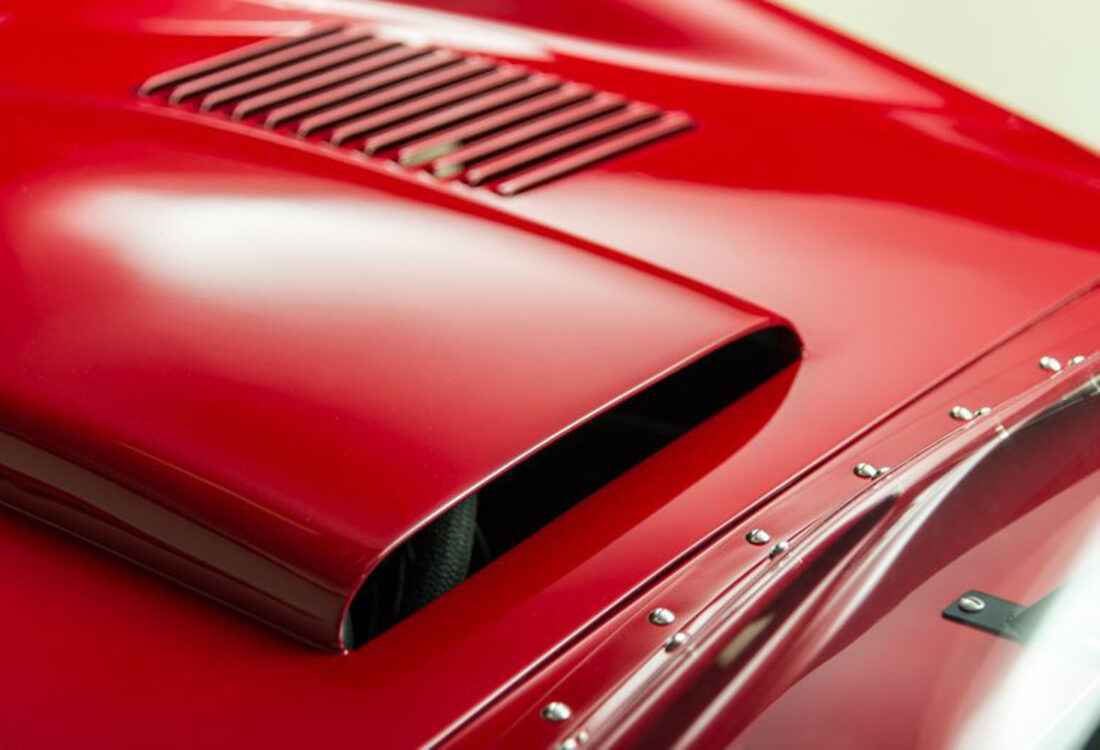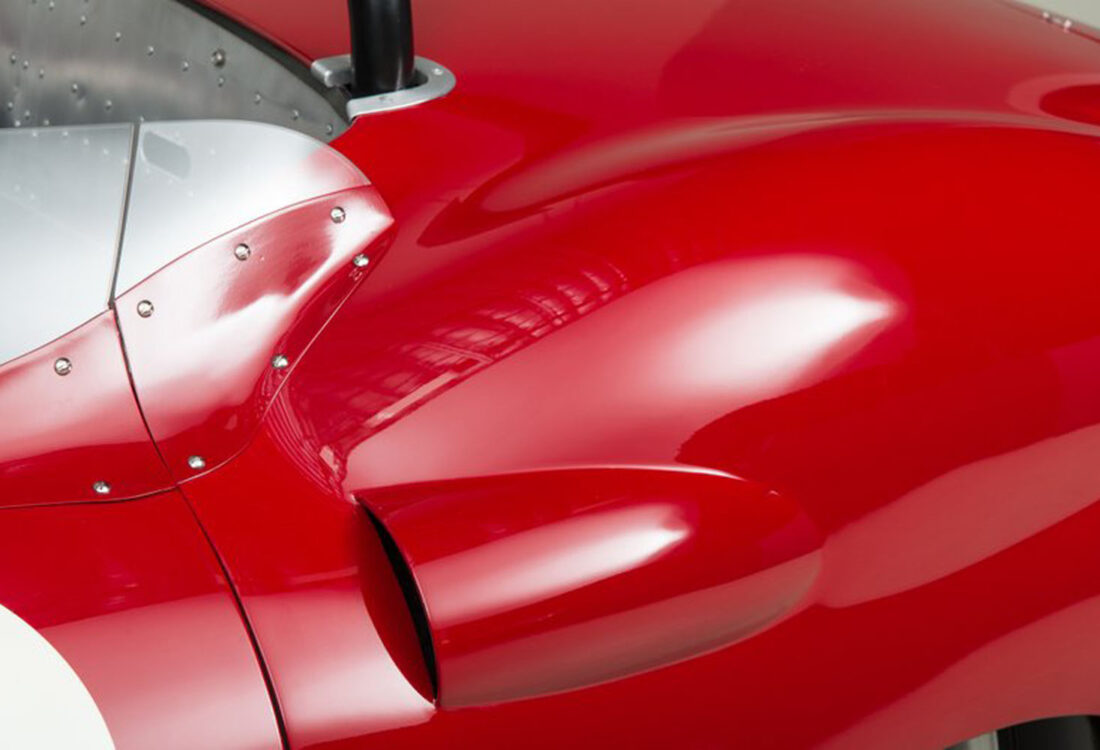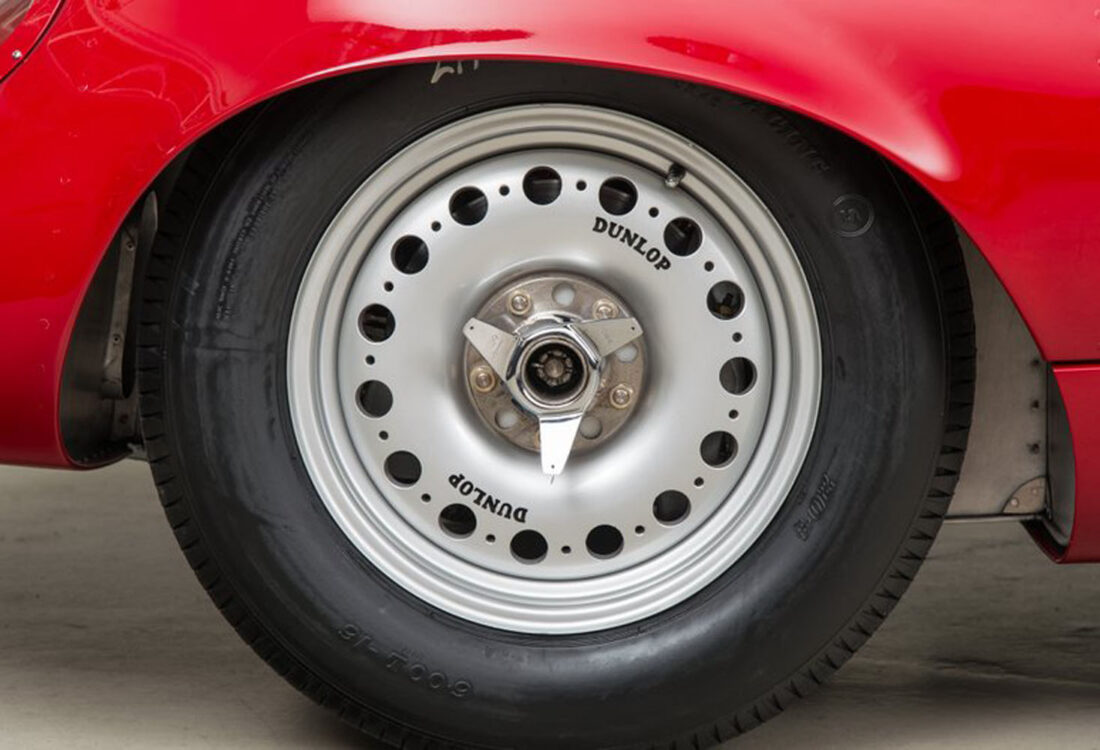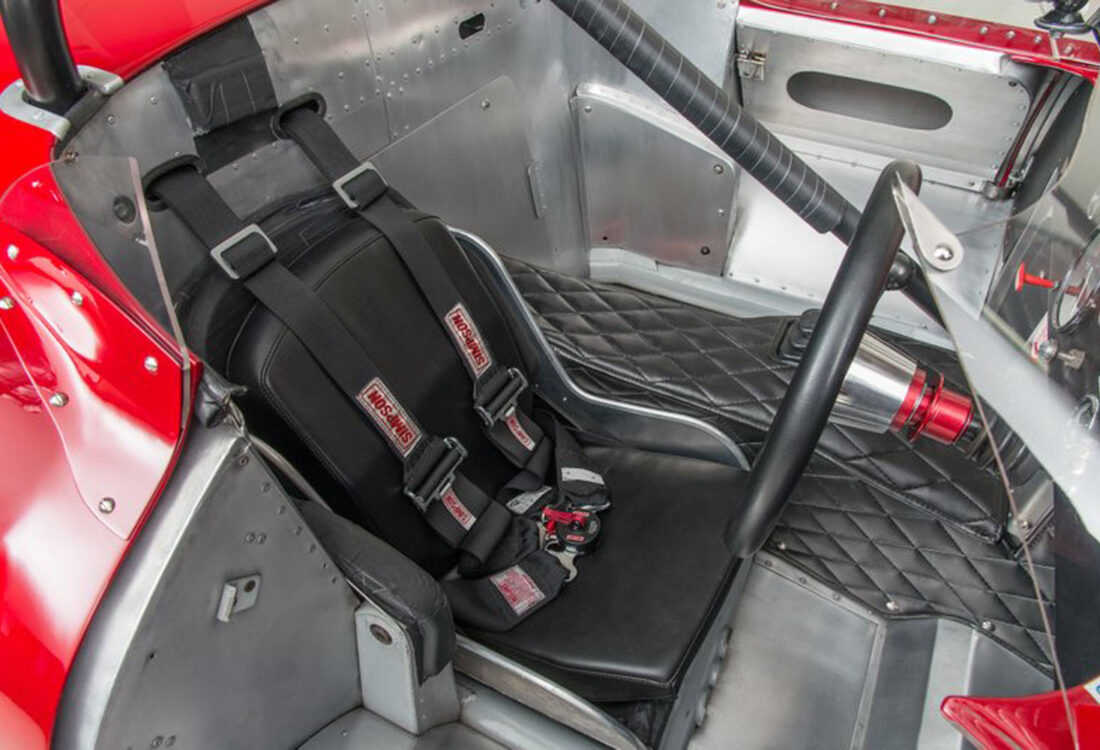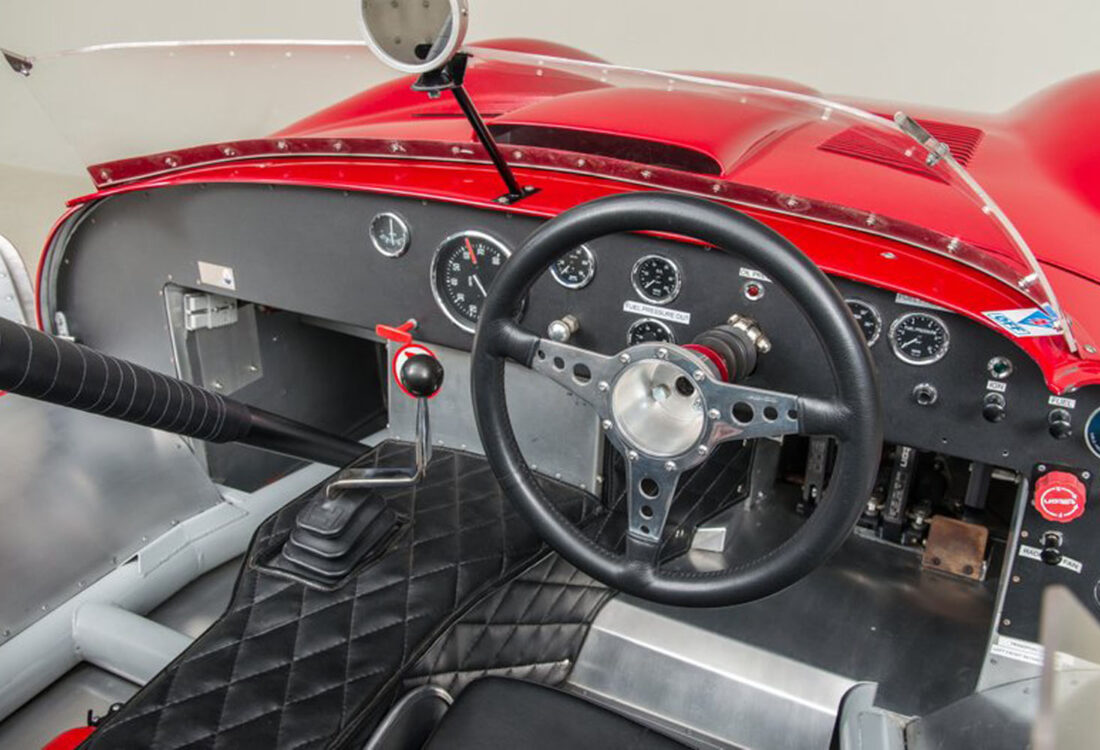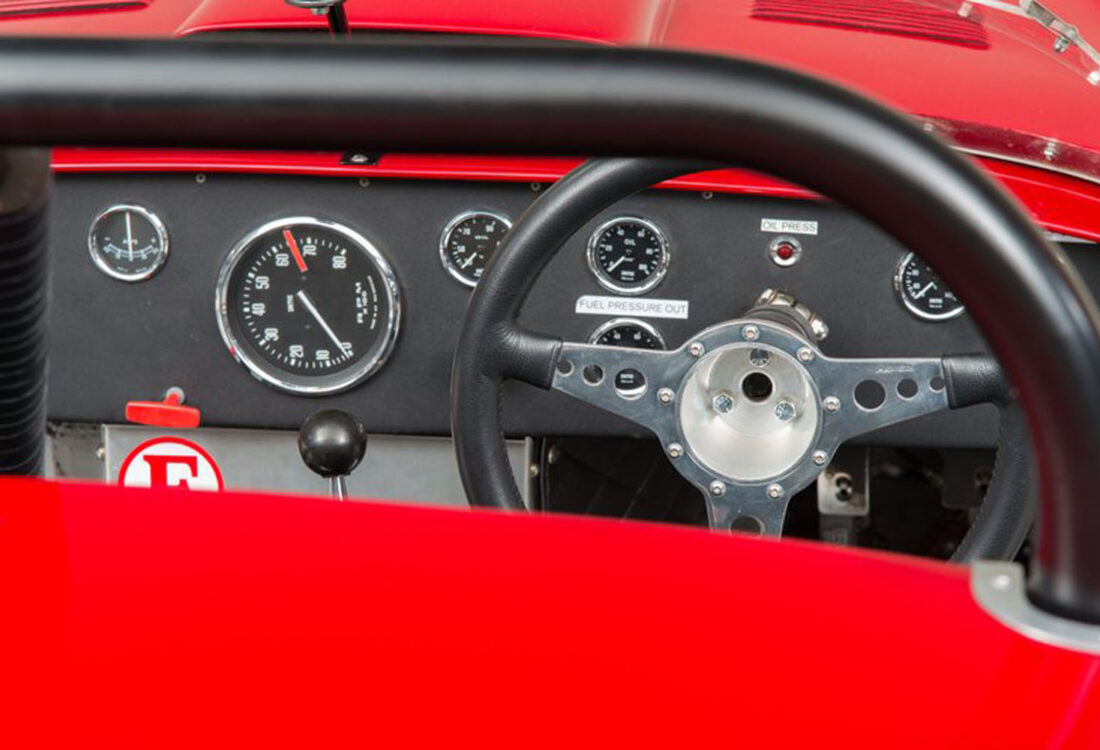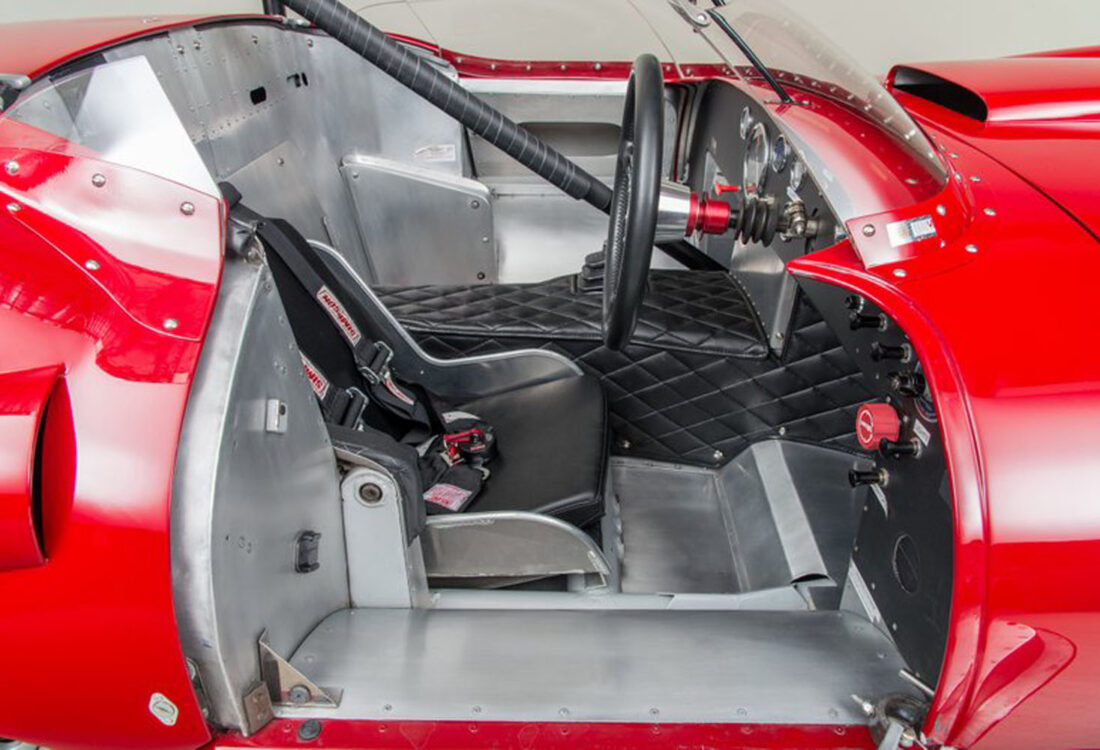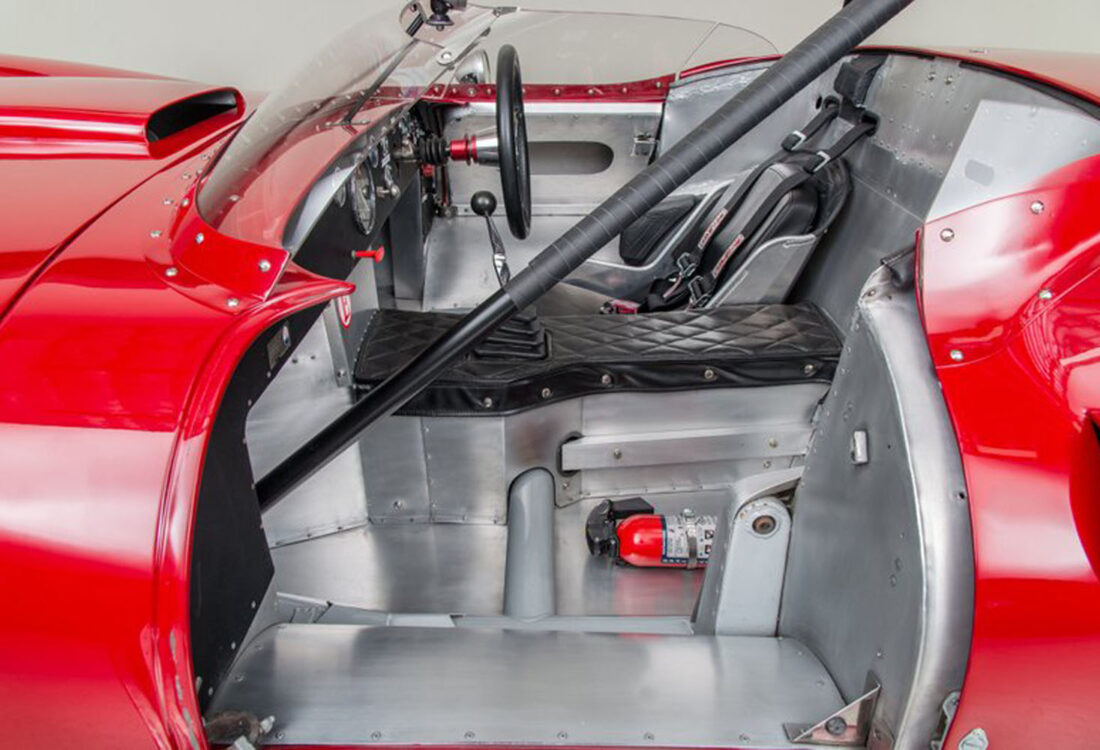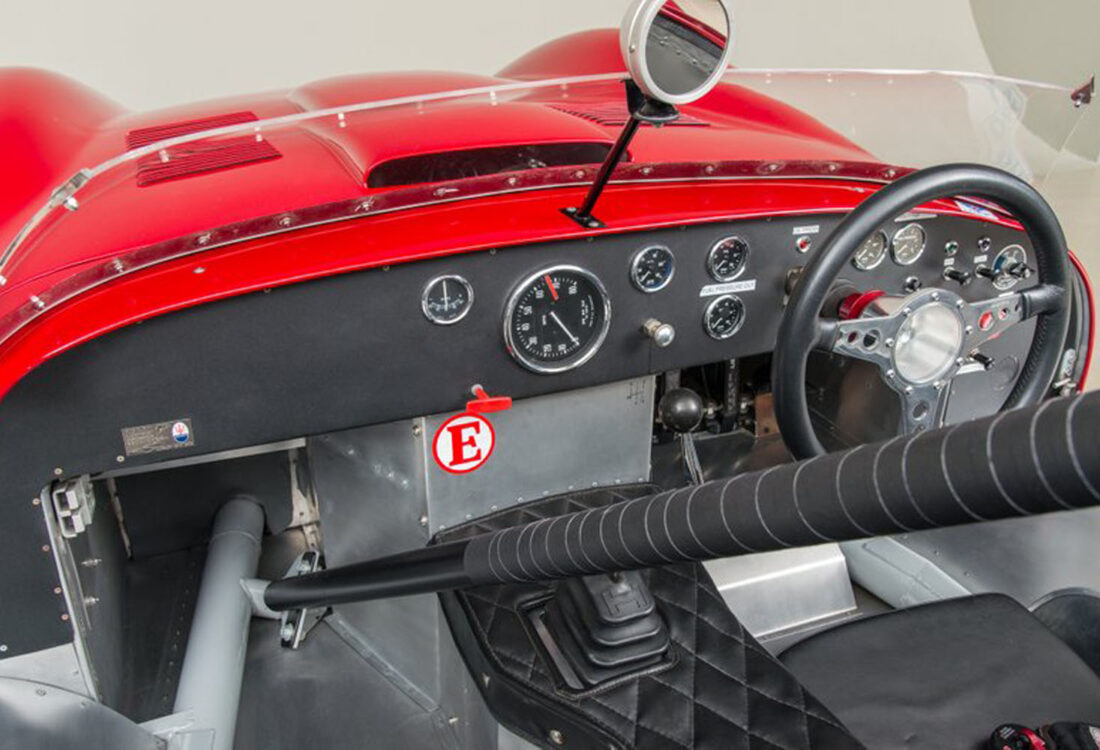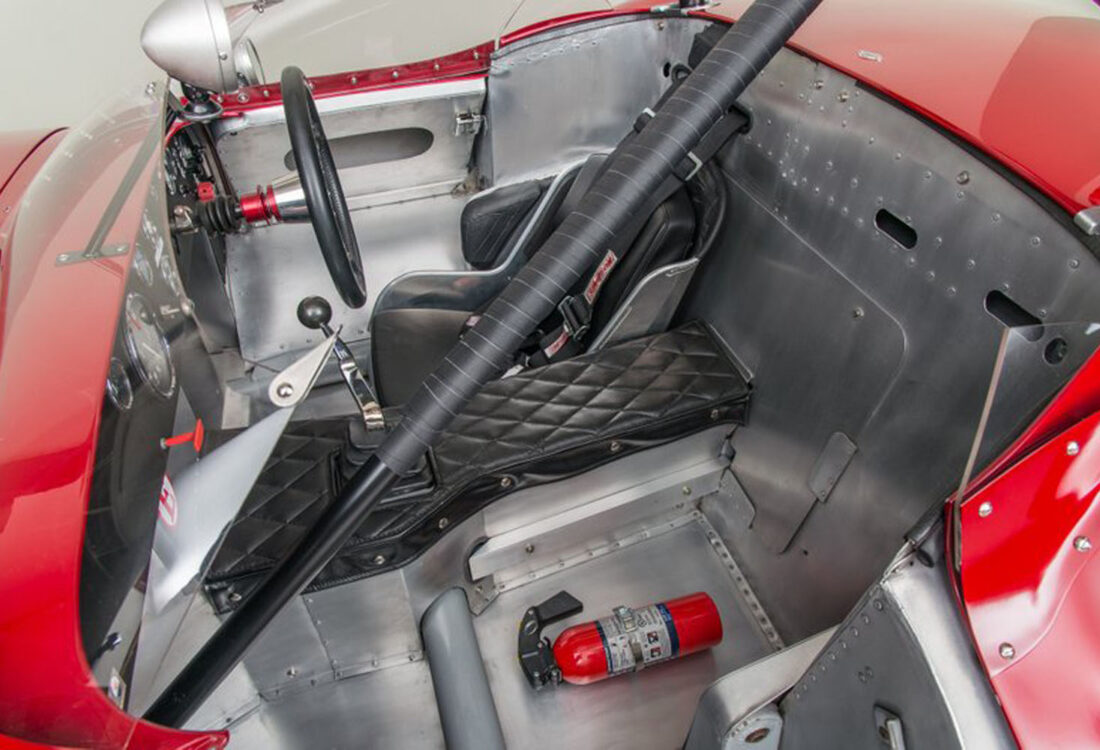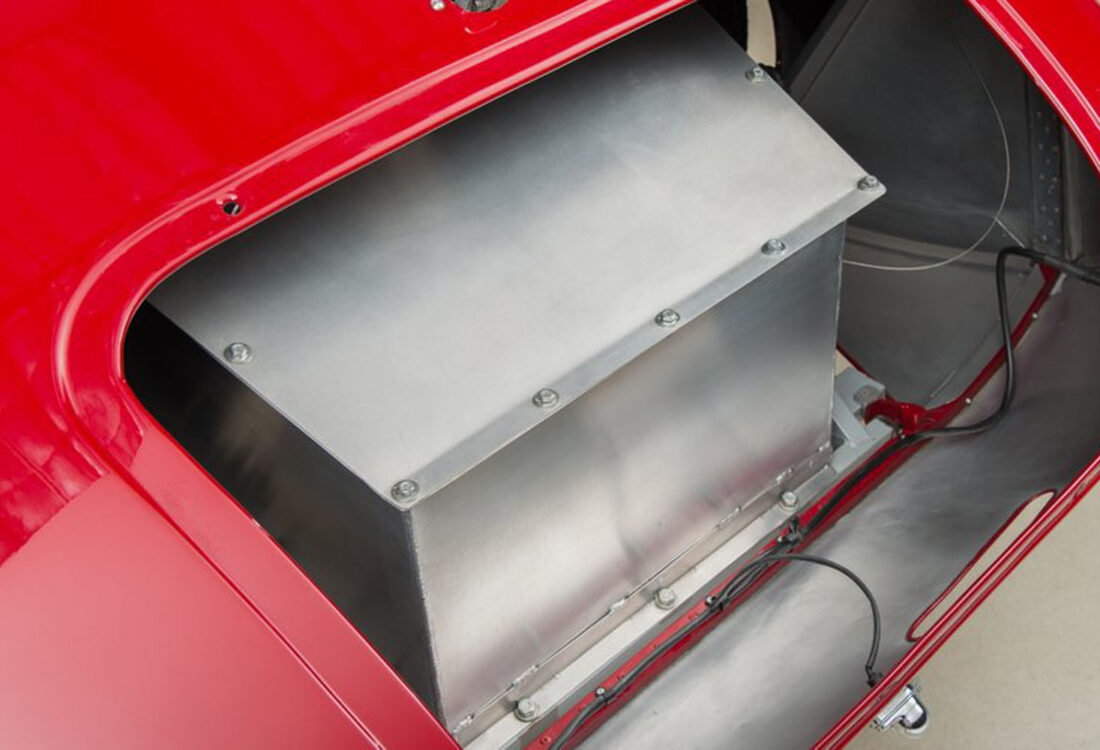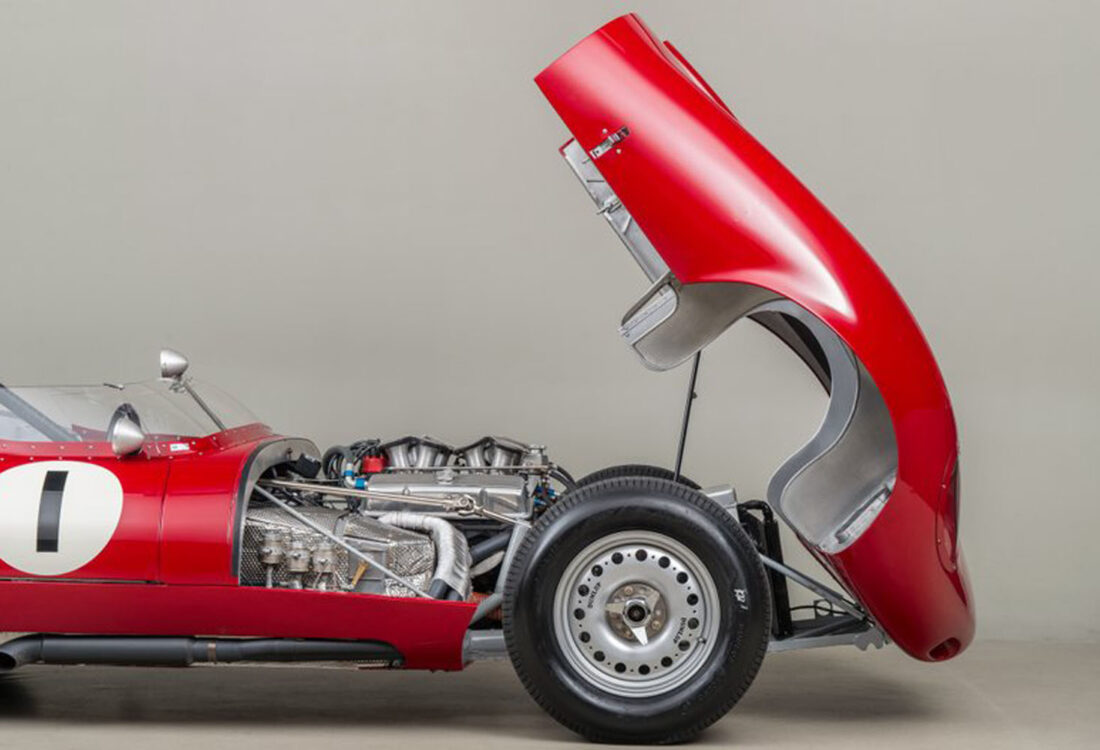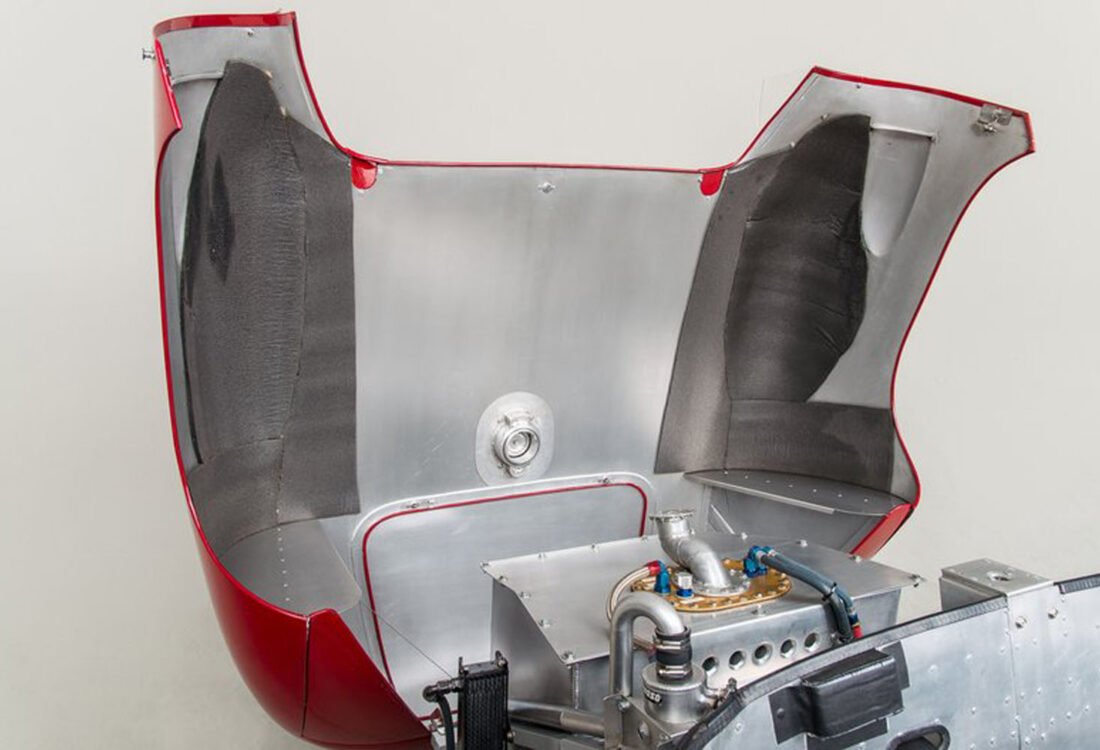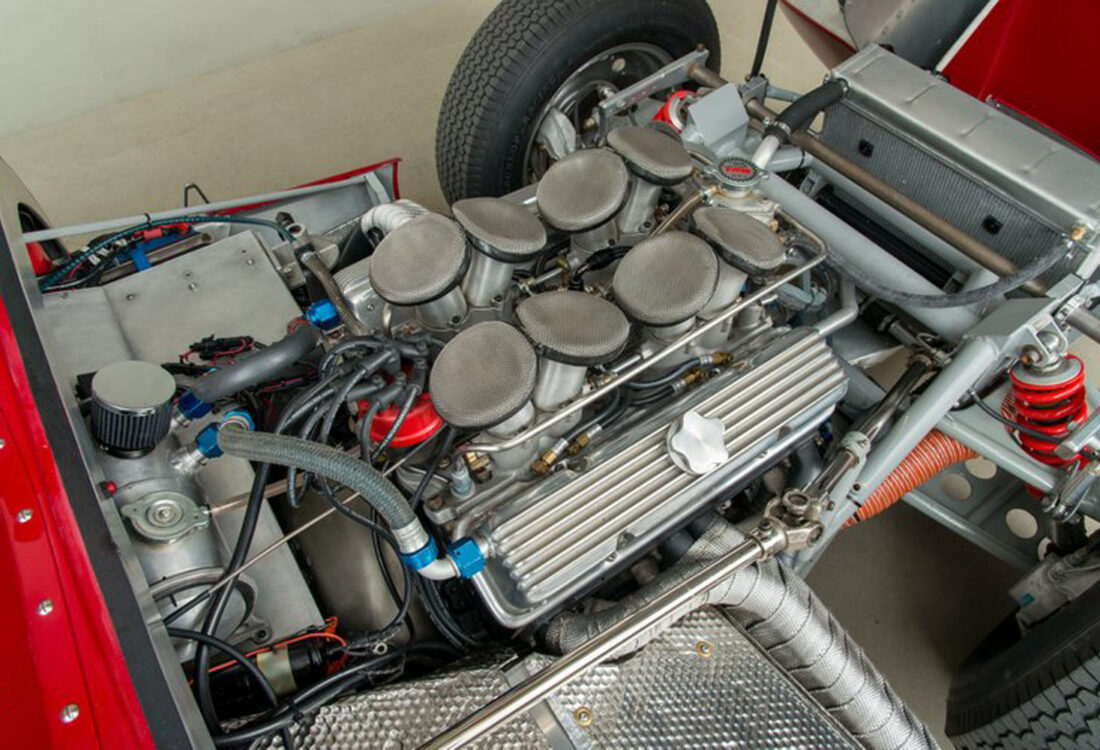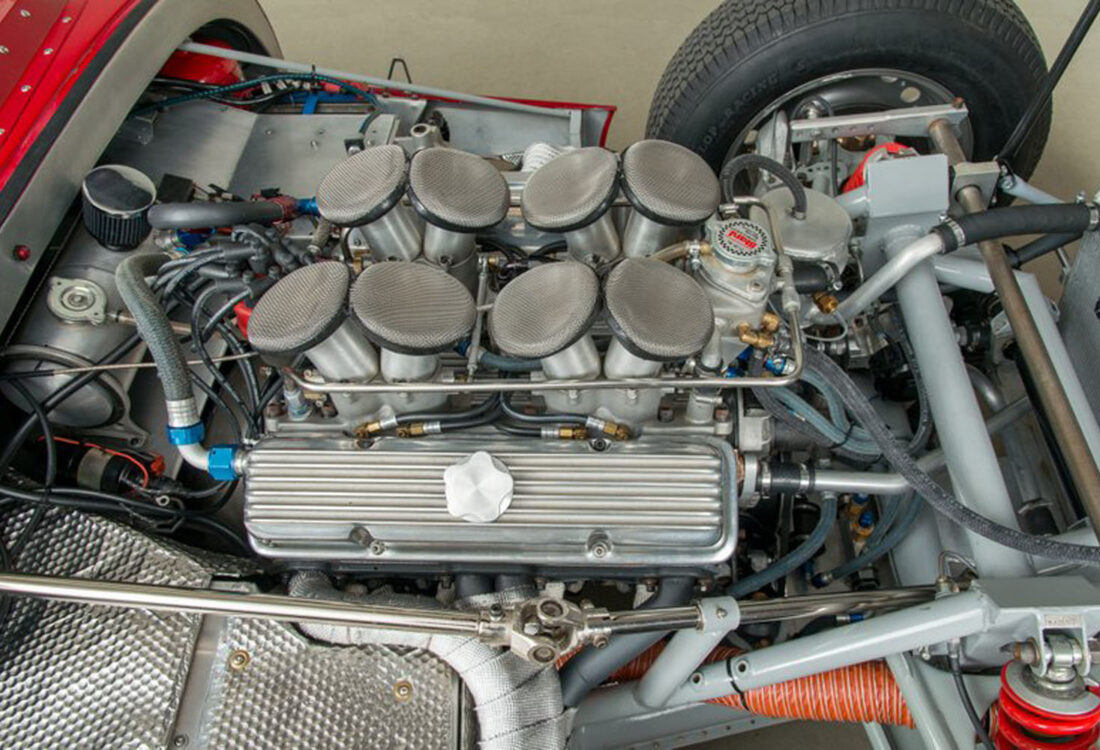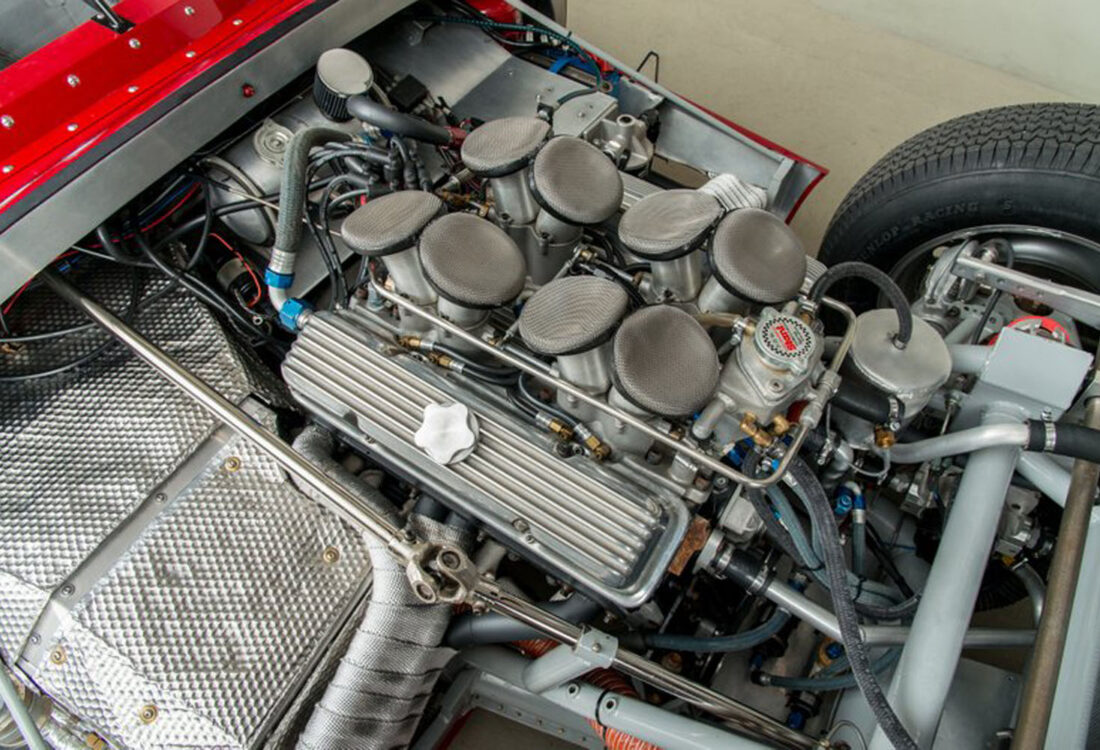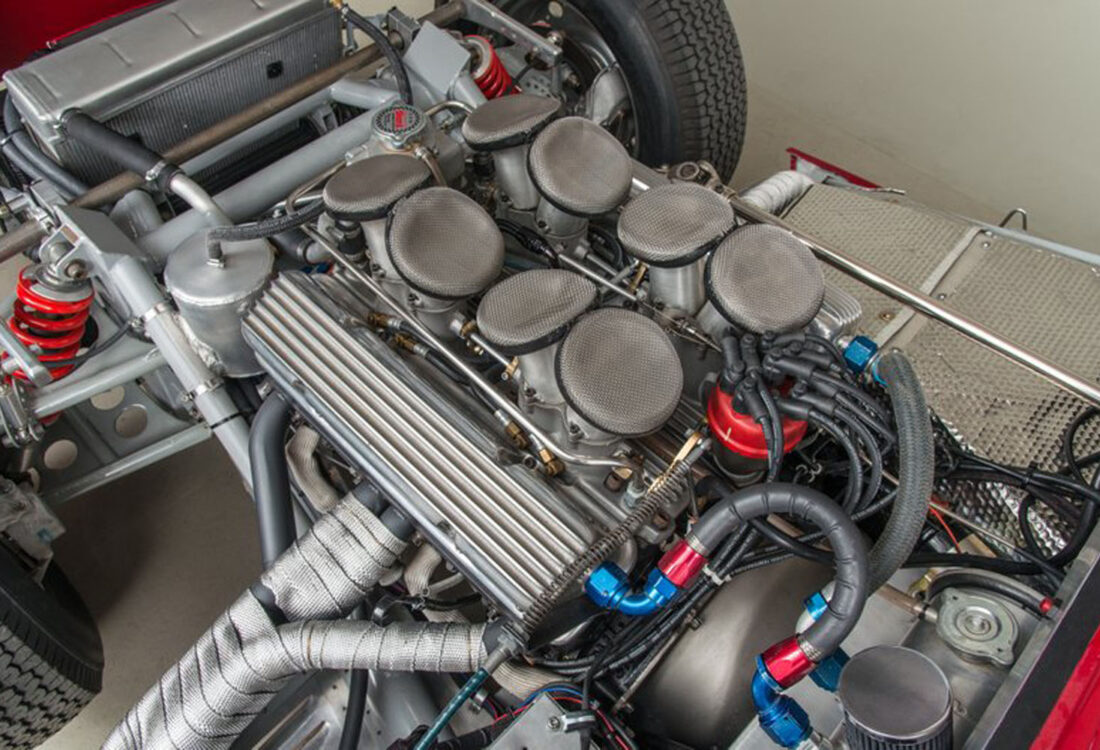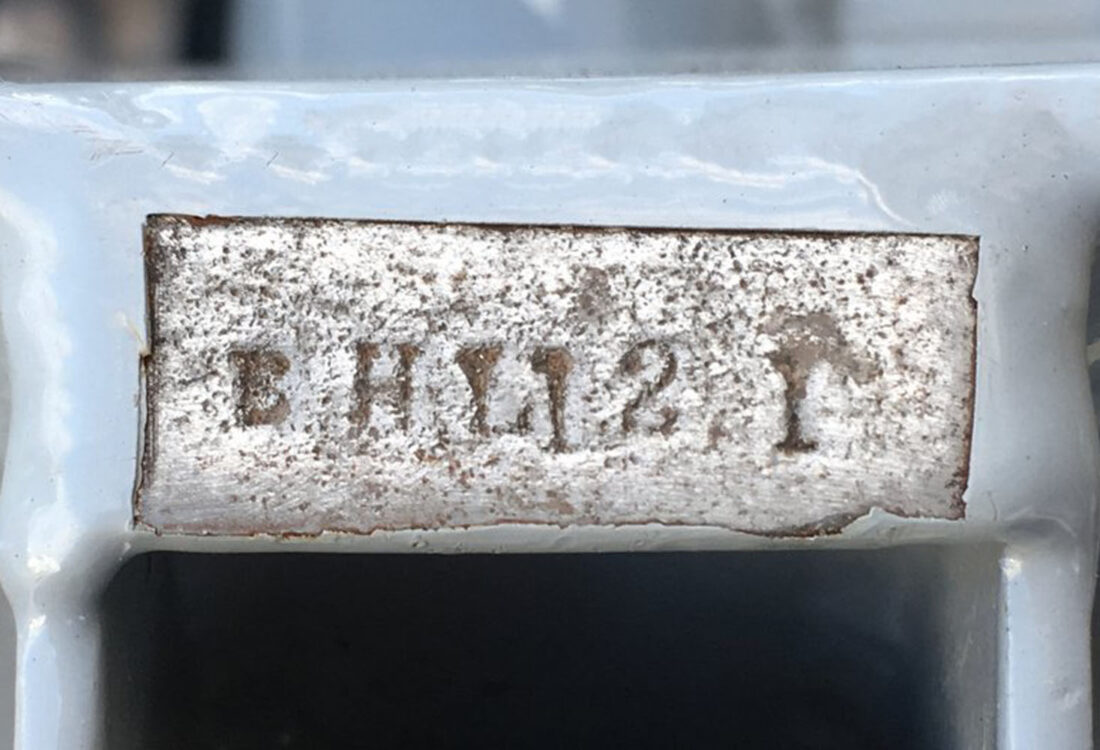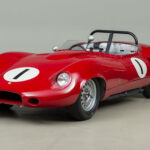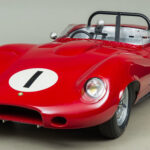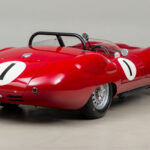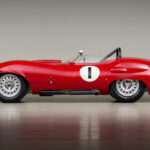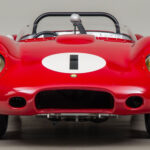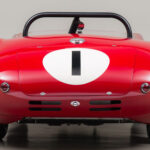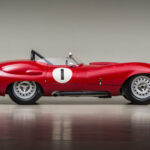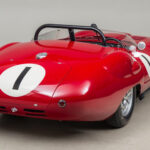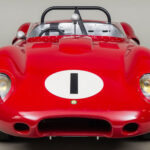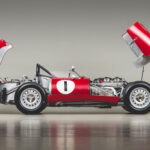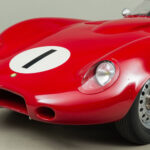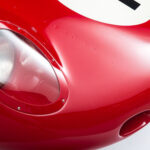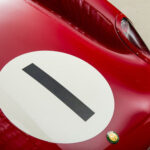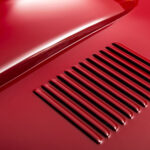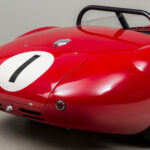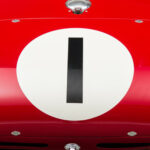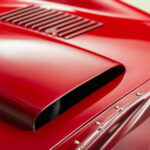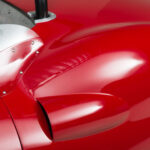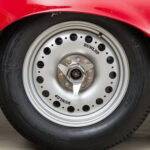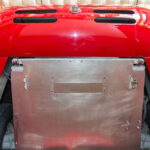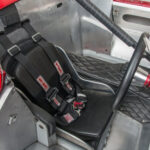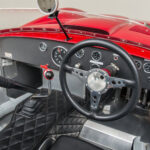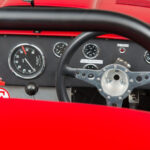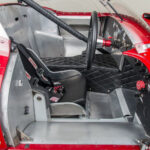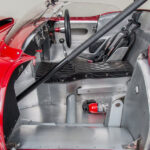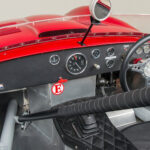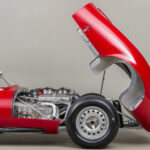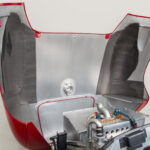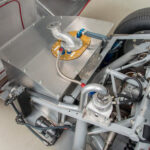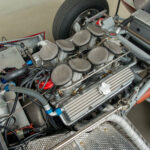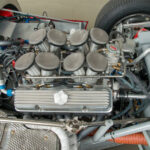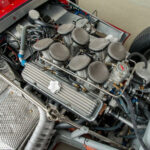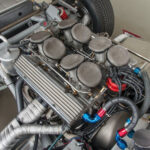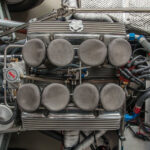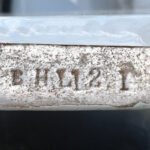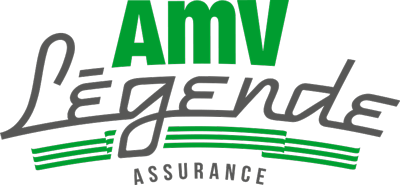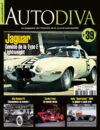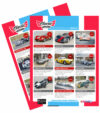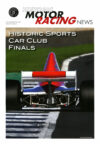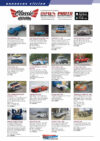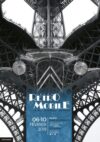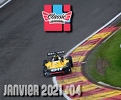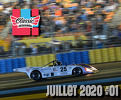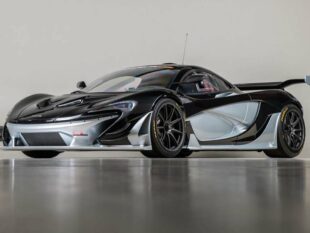
LISTER-COSTIN CHEVROLET PROTOTYPE [Vendu]
Les services + de Classic Racing
Bientôt disponible
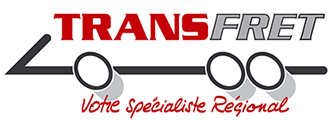
Bientôt disponible
A votre service depuis 1995, Transfret c’est avant tout le respect des collaborateurs et des clients.
Pour transporter de 1 à 6 voitures partout en Europe, contactez nous sur www.groupe-transfret.com
Il n’existe pas de catégorie de voitures aussi recherchée que les “racers” à moteur avant qui participaient aux compétitions Internationales et SCCA du milieu des années 50 au début des années 60. Aucune autre voiture de course n’incarne lieux les 50’s. Des formes magnifiques, des sons magnifiques et des performances exaltantes, tout ce qui définit encore aujourd’hui les courses historiques.
Lister, installé à Cambridge, en Angleterre était à cette époque, le constructeur indépendant le plus respecté et le plus prospère.
Au début des années 50, par amour pour la course, Brian Lister a orienté sa société d’ingénierie et de fabrication dans la construction de voitures de course.
Il a commencé par les voitures de sport à moteur MG et Bristol, et la jeune équipe a immédiatement pris sa place sur la scène des courses en Europe.
Après le terrible incendie de février 1957 de l’usine de Browns Lane qui conduisit à la disparition du département compétition de jaguar, Lister fut là pour racheter les pièces récupérables, ce qui lui permit d’offrir des “racers” équipés de moteurs Jaguar de type D.
A partir de là, les voitures de la marque ont véritablement commencé à dominer les courses en Europe.
Aux États-Unis, les voitures de Lister étaient équipées de Chevrolet V8 à la demande des pilotes “stars” de l’époque tels que Briggs Cunningham, Jim Hall et Carroll Shelby.
En 1958, Lister était une force avec laquelle il fallait compter des deux côtés de l’océan.
La Lister Knobbly, battait régulièrement ce que l’Europe et les États-Unis avaient de mieux à offrir à la piste, y compris les Jaguar qui étaient équipées du même moteur.
Afin de conserver cet avantage concurrentiel, Lister a décidé, pour la saison 1959, d’embaucher Frank Costin (Le COS de Cosworth).
Il était alors un jeune ingénieur en aéronautique et aérodynamicien de renom, qui avait pour références quelques années chez de Havilland Aircraft, ainsi que la conception de la carrosserie élégante des Lotus Mark VIII, Lotus Eleven et du Vanwall VW5, vainqueur du tout premier championnat F1 des constructeurs.
S’appuyant sur toute son expérience, il conçut le design de la Lister Costin, qui peut à bien des égards être considéré comme la véritable relève de la D-Type.
Au total, treize Costin Lister ont été construites; un prototype à moteur Chevrolet V8 et douze versions de série; dont trois avec un moteur Jaguar, huit avec un V8 Chevrolet et une avec un V8 Maserati.
BHL 121 a la particularité d’être le prototype, donc la toute première Lister Costin.
Conçue pour recevoir un Chevrolet V8, la voiture était comme dissimulée dans le nouveau corps plus lisse que lui avait dessiné Costin.
Cette voiture a été livrée à son premier propriétaire, le coureur gentleman John Ewer, au début de 1959.
Ewer l’engagera immédiatement et avec succès dans les épreuves de Snetterton, Goodwood et Silverstone en 1959 et 1960.
Ewer vendra BHL 121 en août 1960 à Jimmy de Villiers un pilote de Rhodésie du Sud.
De Villiers l’exportat en Afrique pour participer au 1er Grand Prix de Rhodésie.
La voiture a ensuite roulé avec le pilote rhodésien John Love qui aurait à son volant remporté un championnat sud-africain.
En 1986, Cedric Selzer, ancien mécanicien du Team Lotus F1 devenu restaurateur, la retrouva et l’acheta.
Peu de temps après, David Beckett, l’a achetée, hors d’usage, mais complète et dans son “jus” d’origine.
Il a entrepris dans la foulée une restauration complète qui a été achevée en 1987.
Beckett l’engagera dans de nombreux meetings à la fin des années 80 et au début des années 90, remportant les championnats HSCC et AMOC en 1988 et 1991.
Au début des années 90, Beckett vendit BHL 121 à David Clarke de Taylor et Crawley, lesquels cédèrent ensuite la voiture à un nouveau propriétaire qui engagea les pilotes Tony Dron et Soames Langton, pour la conduire lors d’événements historiques.
La voiture sera finalement vendue aux enchères de Brooks au Goodwood Festival of Speed de 1995 pour 184 000 dollars. C’est Vintage Racing Motors des États-Unis qui emportèrent l’enchère et exportèrent la voiture aux États-Unis où elle rejoindrait leur belle collection de voitures de course historiques à Seattle.
En 1999, la voiture trouva un nouveau propriétaire, Pat Hart qui la confia à Tony Garmey, un Néo-Zélandais dirigeant la société Horizon Racing and Performance, située à Maple Valley, dans l’État de Washington.
Celui-ci la restaurera et la préparera pour la course, puis l’engagea à Monterey Historics ou il prit la 2e place.
Il continuera à piloter BHL 121 avec succès pendant près de 10 ans sur la côte ouest et en Nouvelle-Zélande, puis en 2001 il est revient à Monterey Historics ou il signe la pole et gagne sa classe contre Ferraris, Maserati et d’autres Listers.
Depuis son arrivée à Canepa, le BHL121 a été démontée, contrôlée et remontée dans les règles de l’Art. Elle a retrouvé sa superbe peinture rouge cramoisi originale avec des flasques blanc Wimbledon. Un numéro 1 est peint à la main, comme lors de sa première course en 1959.
Tout a été fait pour lui redonner son lustre et ses performances d’antan jusqu’à l’injection de carburant Hilborn qui alimente un nouveau Chevrolet 327cid.
Elle repose sur un jeu de Dunlop tout neufs installés sur des roues en alliage de style Dunlop qui ont été re-fabriquées à la main en Australie de manière à garantir une aspect visuel 100% équivalent à celui qui était le sien en 1959, mais en respectant les spécifications de conduite de course modernes.
![]() On sale 1951 Lister Chevrolet Costin Prototype Vin #BHL 121.
On sale 1951 Lister Chevrolet Costin Prototype Vin #BHL 121.
In all of vintage racing, there is no more desirable or collectible category of cars than the front-engined sports racers that ran in International and SCCA competition from the mid 1950s into the early 1960s. As a group, they embody the beautiful shapes, wonderful sounds, and exhilarating performance that defines historic racing.
During that era probably the most respected and successful independent manufacturer was Lister of Cambridge, England. In the early 50’s, out of a personal love for racing, Brian Lister steered his third generation engineering and fabrication company into building race cars. Beginning with MG and Bristol powered sports cars the young team immediately made a mark on the European racing scene. After a fire at Jaguar’s Browns Lane Plant destroyed the competition department in February 1957, Lister was there to pick up the pieces. Now with a supply of Jaguar D-Type engines the firm’s cars really started to dominate racing in Europe. In the US, Lister’s cars were fitted with Chevrolet V8s by the likes of Briggs Cunningham, Jim Hall, and Carroll Shelby. By 1958 Lister was a force to be reckoned with on both sides of the pond.
The Lister Knobbly, as the 1958 car was commonly known, was regularly seen beating the best Europe and the US had to offer, including the factory Jaguar entries sharing the same engine. To maintain Lister’s competitive advantage for the 1959 season Brian Lister hired noted aeronautical engineer and aerodynamicist Frank Costin to redesign the Knobbly. His credentials included years of work for de Havilland Aircraft company, as well as designing the sleek bodywork for the Lotus Mark VIII, Lotus Eleven, and the Vanwall VW5 – the winner of the very first F1 Constructor’s championship. Drawing on all of this expertise he came up with the design for the Lister Costin, which was in many ways a true D-Type successor. In total, thirteen Lister Costins were built; one Chevrolet V8 powered prototype, and twelve production versions; three with Jaguar power, eight with Chevrolet V8 engines, and one with a Maserati V8.
BHL 121 holds the distinction of being the prototype, and very first Lister Costin. Fitted for a Chevrolet V8, the car was cloaked in Costin’s new, smoother body. The car was delivered to its first owner, gentleman racer John Ewer, in early 1959. Ewer would go on to successfully race BHL 121 at Snetterton, Goodwood, and Silverstone over the next year.
Ewer sold the car in August 1960 to Jimmy de Villiers of Southern Rhodesia. Villiers would export BHL 121 to Africa to participate in the 1st Rhodesian Grand Prix. The car ran next with Rhodesian driver John Love at the wheel, and is believed to have won a South African Championship for him.
In 1986 the car was found and purchased by Cedric Selzer, a former Team Lotus F1 mechanic turned restorer, and returned it to UK. Shortly after, veteran club driver David Beckett purchased the disused, but original racecar, and engaged in a complete restoration that was completed in 1987. Beckett would go on to race the car at historic events throughout the late 80’s and early 90’s, with Beckett winning the HSCC and AMOC Championships in 1988 and 1991.
Beckett would go on to sell BHL 121 in the early 90’s to David Clarke of Taylor and Crawley who subsequently traded the car to a new owner who hired accomplished sports car drivers Tony Dron and Soames Langton to pilot the car at historic events.
The car would eventually be sold at the Brooks Auction at the 1995 Goodwood Festival of Speed for $184k. The winner of the car was Vintage Racing Motors from the USA. They exported the car to the US where it would join their fine historic race car collection in Seattle.
In 1999 the car found a new owner, Pat Hart. Hart handed it over to New Zealander, Tony Garmey of Horizon Racing and Performance in Maple Valley, Washington, for a complete restoration and race preparation. Garmey completed the restoration in record time, and went on to take 2nd in class at the Monterey Historics later that year. He would continue to race the car for the next decade both on the West Coast and in New Zealand. He returned to the Monterey Historics in 2001 to sit on pole and win his class against Ferraris, Maseratis, and other Listers.
Since arriving at Canepa BHL121 has been mechanically sorted, and cosmetically refinished in its original stunning Crimson red paint with Wimbledon white roundels. A hand painted number 1 is emblazoned on the side, just as it was when it raced in 1959.
The car is running period Hilborn fuel injection on fresh 327cid Chevrolet fed through a T-1O 4-speed dog-leg transmission. It sits on fresh Dunlop rubber wrapped on alloy Dunlop-style wheels. The wheels were handmade in Australia to be 100% visually period correct while as the same time meeting modern racing stress specifications. The car was fully crack checked.
Raced at Snetteron, March 22, 1959 – Driver: John Ewer
Raced at Goodwood, March 30, 1959 – Driver: John Ewer
Raced at Snetteron, September 6, 1959 – Driver: John Ewer, 4th Place
Raced at Martini Trophy Silverstone meeting, May 21,1960 – Driver: John Ewer, 3rd Place
Disclaimer: The above vehicle information is complete and accurate to the best of our knowledge at the time it is posted to this website. Corrections or additional information is always appreciated. All advertised prices exclude government fees and taxes, any finance charges, any dealer document preparation charge, and any emission testing charge. Vehicles are subject to prior sale. All advertised to be true but not guaranteed. We assume no liability for errors or omissions.
Passeports techniques
| Passeport | ASN | Numéro | Extrait |
|---|---|---|---|
| Passeport Technique (3 volets) |  | ||
| Passeport technique international (PTH) |  | 6923 |
Les dernières annonces de CANEPA
